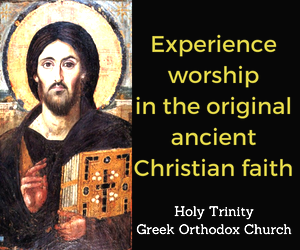What do you want to Ask an Atheist? Submit your questions online or fill out the form below.
By Jim Downard
How can we explain fruit without a creator? Let alone the problem of the first cause. Fruit has a protective shell that does not advantage the tree; it only benefits man. True science reveals the need for a creator — quantum physics’ biggest problem is determining how one thing happens over another.

The theoretical dynamics of this process have been worked out in detail, such as the 2003 analysis by Lewin et al. There has been considerable evolution of all this over time, of course, again covered in many science papers. Pedro Jordano is a nice 2010 overview of some of that work.
Two 2008 papers explore how known fossilized fruit forms related to past life: deep changes in dispersal strategies going back into dinosaur times and more recent (but still extinct now) megafauna examples.
The deep biological origins of fruit coverings from plant seed ovules has also been a subject of ongoing study, tracing back deep in plant evolution to the diversification of the MADS-Box gene cluster, work done only quite recently, such as this 2012 paper.
The leap from plant biology to the governing fabric of the universe is extreme, but let’s follow it anyway. The “problem of the first cause” is one of those persistent tempests in philosophical teapots. The Universe could just as easily be an Uncaused Cause as any god(s) believers feel obliged to pencil in. Whether or not any god(s) were involved in why there is the universe we can see, the details of what has been discovered offer scant support for any of the many religious candidates offered for them.
For example, the sun, moon and stars are not even slightly younger than the Earth and plant life, as the Biblical Genesis tale stipulates for the fourth creation day (a story not even originally wrong, but an error cribbed second hand from the Mesopotamian creation stories worked into biblical lore during the Babylonian Captivity).
I have delved into a lot of these matters in the “Dinomania” (on the zany world of Young Earth Creationism) and “Cruz the Bible Tells Me So” (on the parallel world of Kulturkampf religious apologetics) “Troubles in Paradise” chapters at www.tortucan.wordpress.com. Comments and questions are welcome there as well.
So whatever wonderments there may be deduced about seed plant coverings, it doesn’t provide a shoehorn verification for the biblical stories in general (or any other known religious origins tradition).
As for quantum physics, I am unclear what the questioner thinks they mean by a supposed problem there in “determining how one thing happens over another.” Quantum physics involves probability, true, but in the end the probability waves operate with a mathematical precision. It works, and so well that the solid state physics your computer microprocessors rely on are describable with extreme reliability.
Now if any religious texts had shown the slightest indication that their inspirational sources were aware of the nature of quantum physics, or MADS-Box genes, or why so many Cretaceous Era plants looked the way they did and not quite yet like the ones we have now, that would be impressive. But that’s not what we get. We get jealous beings doing magical things having more in common with the Sinbad and Ichabod Crane imaginative fiction mode than what can be studied in the vast science literature.
There is indeed a lot of True Science out there, and I heartily recommend people read more of it.










GOD, I would imagine deemed it not as important to explain the fine details of things like a fruits protective coating which does not offer salvation but rather how HE came and died for you and me Jim, both sinners in need of a SAVIOR.
Thank you, Jim, this was a fun read. If people said they could see God metaphorically in a plant, I find this akin to anthropomorphic forms of seeing personhood in animate and inanimate forms in folk tales from all over the world, which is a testament to the great imagination and creativity in people. I also find it fascinating that people are using what was a former mode of intelligent design theory in medieval times, when all things were classified as to how they were alike to god, rather than how they differed. Classification systems changed and this also changed a paradigm in science which led to far more break throughs in health and etc. I also find it startling when someone who only uses science as a way of making their religious arguments thinks the greatest problem within quantum physics is how one thing happens over another? This is certainly not the greatest challenge in quantum physics. 🙂 It is also predictable that there is a comment on this article which dismisses the letter of the law in the bible and supposedly embraces its spirit at the posters convenience.
What is the letter of the law you are referring to?